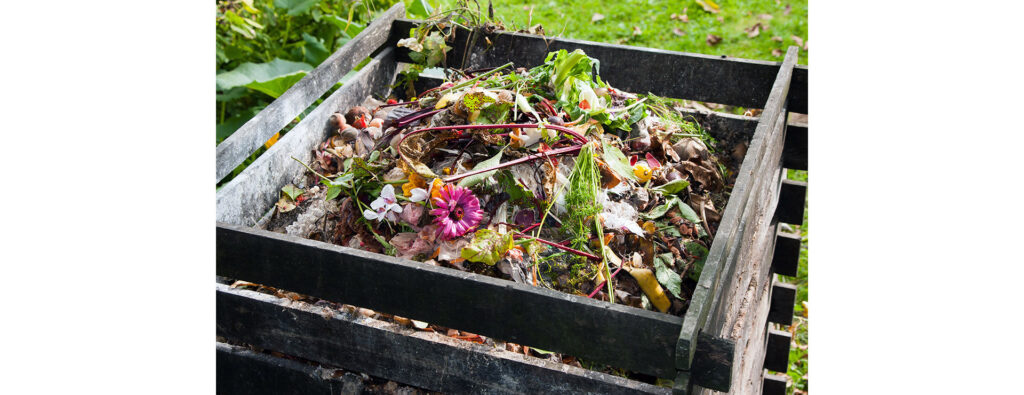Composting is the process of breaking down organic materials into a nutrient-rich soil amendment called compost. It’s a natural way to recycle kitchen scraps, yard waste, and other biodegradable materials, turning them into a valuable resource for your garden. Not only does it reduce waste sent to landfills, but it also improves soil structure, enhances nutrient content, and promotes healthier plant growth.
In this blog, we’ll explore essential beginner composting tips — from understanding the process to troubleshooting common issues and using compost effectively.
Getting Started
When creating a compost, follow these initial steps to ensure success:
1. Choose a Composting Method
The composting method you select must fit your space, lifestyle, and goals. Here are your options:
- Composting bin: Perfect for smaller yards or urban settings, compost bins offer controlled decomposition in a contained space.
- Compost pile: If you have ample outdoor space and prefer a cost-effective approach, consider creating a compost pile directly on the ground.
- Compost tumbler: Tumblers provide an effortless way to aerate and turn compost, making them ideal for those with limited space in their gardens.
- Vermicomposting: Opt for vermicomposting with worms if you’re seeking an indoor solution or year-round compost production.
2. Find a Suitable Location
Your compost setup needs moisture to facilitate decomposition, but too much water leads to foul odors and can attract pests. So, choose a well-draining spot away from direct sunlight. Consider its proximity to your garden for easy compost application, avoiding placement directly against buildings or near sensitive areas like water sources.
3. Gather Compostable Materials
Composting needs a mix of browns (leaves, hay, or straw) and greens (grass clippings, green leaves, organic waste). Dry leaves and shredded cardboard are examples of browns, they add structure and absorb moisture. Greens, such as kitchen scraps and grass clippings, provide nutrients and speed up decomposition.
The Composting Process
Once your composting system is set up and materials are gathered, it’s time to start. Layer organic materials in your bin or pile, aiming for a ratio of 3 parts brown to 1 part green. Ensure proper aeration by loosely packing the pile and placing it in a well-ventilated area. You may also periodically water it to maintain a damp sponge-like consistency.
Don’t forget to turn the compost regularly to aid decomposition and prevent odors. Depending on factors like temperature, moisture, and composting method, your compost should mature in a few months to a year.
Beginner Composting Tips for Troubleshooting Common Issues
As you start composting, you might face some areas that need troubleshooting. Here’s how to fix some of the most frequent issues in the composting process:
Odors and Pests
Odors and pests indicate failing decomposition, often caused by improper aeration or wrong moisture levels. Be sure to check the ratio between your browns and greens; you may need to experiment with the mix until you find the right balance. You may also consider turning your compost pile more frequently to increase airflow or sheltering it from rain or water to control moisture.
Moreover, meat and dairy products are harder to decompose in residential settings. Therefore, try omitting these wastes from your compost. Another solution is to move your bin or pile away from plants to reduce the chances of pest infestations.
Slow Decomposition
If decomposition is happening slower than expected, check the browns-to-greens ratio and adjust it accordingly. It also helps to chop larger organic wastes, such as whole fruits or thick peels, into smaller pieces to hasten decomposition and enhance microbial activity.
Overly Wet or Dry Compost
A compost pile with improper moisture levels won’t decompose properly and may lead to other problems. So, it’s essential to first determine the cause of the problem. For instance, if your compost is overly wet, you may consider moving your bin to a roofed space to shelter it from rain. In contrast, dry compost will need regular watering and turning to achieve a damp sponge-like consistency. It’s equally crucial to check the ratio between browns and greens to ensure you have the optimal balance.
Harvesting and Using Compost
Generally, mature compost resembles dark, rich soil with an earthy scent. The original waste materials deposited shouldn’t be distinguishable, replaced by a homogeneous mixture of organic matter ready for your garden.
Harvesting methods vary based on your setup and preferences. For bins or tumblers, sift or screen to separate finished compost from debris. In pile composting, mature compost gathers at the pile’s bottom, making it easy to scoop out for use while leaving unfinished material behind.
To use compost, blend it into garden soil to boost fertility and water retention. This introduces beneficial microorganisms and provides nutrients for healthy plant growth. It also serves as an effective mulch for garden beds to suppress weeds and regulate soil temperature. As the mulch decomposes, it releases nutrients into the soil, ensuring robust plant growth.
Finally, consider brewing compost tea by steeping compost in water. Apply this nutrient-rich solution to plants, providing a concentrated dose of nutrients.
For Other Horticultural Advice, Contact the Certified Landscape Professionals at Well Rooted Gardens.
With over 20 years in the industry, multiple degrees, and certifications, we have the landscape experience to help your landscape become a lasting landscape!

